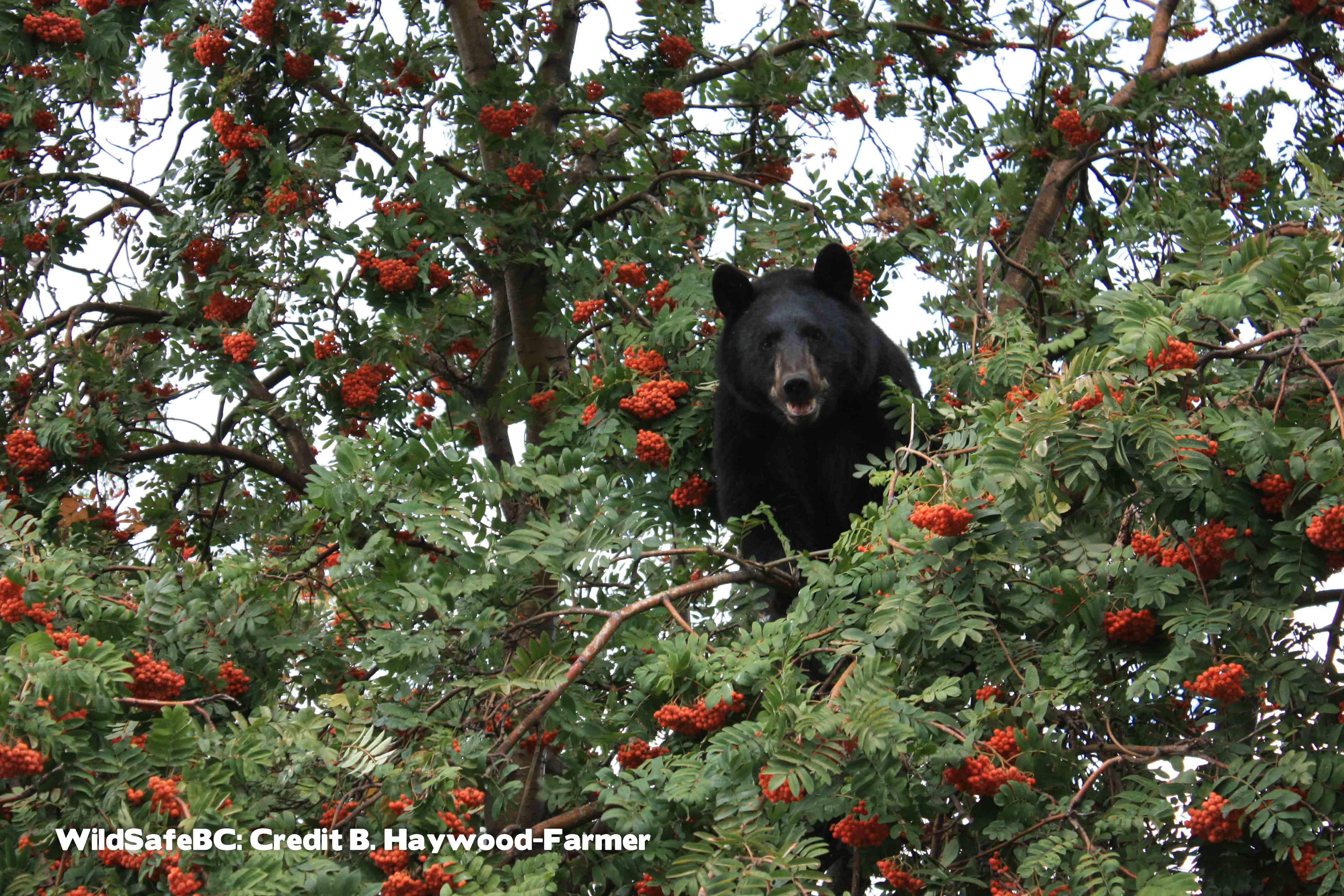“Managing fruit trees critical to avoiding human-wildlife conflicts” – WildsafeBC’s Rosie Wijenberg
Ripe fruit in the Kootenays is attracting wildlife, especially in communities in the Creston Valley where orchards are plentiful.
Once the critters find a food source, they stick around.
“The fruit trees bring em’ in nice an close to our homes and into our communities.” Says Wijenberg. “When that fruit is gone, even though its only here for a short while, they will start to look for other food sources that are associated with us. Such as garbage, or compost, gardens, bird feeders. The fruit will also attract rats.”
Bears are another problem. According to Wijenberg close to 500 black bears and 40 grizzly bears are destroyed in B.C. every year, most as a result of being food conditioned. Once bears lose that fear of humans, they will venture into peoples homes. Relocation does not work so as the saying goes…
A fed bear is a dead bear.
Ensuring all attractants are secure is the only way to break this cycle. Here are some tips from WildsafeBC to make sure fruit bearing trees are well managed.
- Keep fruit trees pruned and manageable so that they are easy to pick
- Power wash blossoms off the trees in the spring to reduce the harvest
- Pick fruit before it is fully ripe and let it ripen indoors in a secure location
- Install an electric fence, either temporary or permanent, to exclude predators
- Consider replacing fruit trees with non-fruit or nut producing options if you are no longer interested in the fruit
- Work with local fruit-gleaning programs to feed humans not bears
More information relayed through Wijenberg:
The Creston Valley Food action Coalition has a harvest share program whereby volunteers will come harvest unwanted fruit. This program is dependent on volunteer availability and if fruit is usable. For information on this program visit www.crestonfoodaction.ca.
In Salmo, a fruit gleaning program is offered through Salmo Community Services. Locals can also seek help in Crawford bay through their farmer’s market.
If you wish to discuss any other issues regarding wildlife, contact me by email: [email protected] or call 250-551-7435. If you are experiencing a conflict with wildlife please call the Conservation Officer Service, RAPP Line at 1-877-952-7277.
Bears are an iconic species that play a vital ecological role and are important seed dispersers that rival birds and other animals in many parts of the province. Huckleberries, saskatoons, blackberries, blueberries, raspberries as well as many more plants are all species distributed by bears. When bears are destroyed as a result of our reluctance to manage our attractants, we lose not only that animal but the role that animal plays in the environment.
Unlike bears, Norway and roof rats are not native to this area. Like bears though they will also feast on unpicked fruit. Harvesting fruit will help to manage the rat population by taking away an abundant food source and removing an attractant that could bring these unwanted visitors closer to your residence. So whether it be to reduce human-bear conflict or to prevent rats from feasting, managing our fruit trees is a good idea.
There are some tools that make reaching fruit safer and more convenient, such as using a catcher basket on a pole, made by a number of manufactures. You can also fabricate your own using empty pop bottles and a pole. There are also ways of managing the amount of fruit on a tree, should you enjoy the tree, but not the fruit. In the spring, as soon as the flowers form, you can use a pressure sprayer to blast away the petals on the flowers before the pollinators arrive, preventing the fruit from forming.
A properly installed electric fence has been shown to be a very effective tool in preventing bears and other wildlife such as raccoons from accessing your fruit tree. There is an electric fence cost-sharing program in the Kootenays for residents in grizzly bear habitat. Contact [email protected] for more information on this program.


